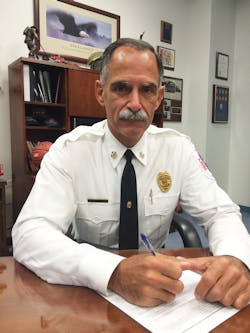In the January 2015 Chiefs Concerns column, we talked about the value of chiefs (and others) progressing beyond managers or followers to become leaders. Those who reach the leadership pinnacle quickly understand one of the most inconvenient truths of leadership: Leaders sometimes have to do radical things or think in radical ways to affect change.
Such was fact after the Worchester and Charleston line-of-duty deaths (LODDs) and for years after the horrific losses of Sept. 11, 2001. In fact, after every LODD, we see a leadership wave throughout the community. Unfortunately, that wave is too late for the deceased, and the repetitive wave is beginning to create a culture of robots. These robots know the game: They’re going to have SAFETY drilled into everything they do for a few months after the event, before they’re able to switch back to their pre-event lackadaisical mode.
As a fire/EMS service, we are failing our people by focusing too much on pure safety and training and not enough on intellectual development.
Now before my safety friends start screaming, I am 100 percent on board with and embrace all of our fire service efforts to ensure that Everyone Goes Home. One of my first edicts as chief in 2010 was to change the motto of the Prince George’s County, MD, Fire/EMS Department to “Safety First, Everyone Goes Home” and to challenge the department’s perceived “cowboy culture.”
What I am NOT on board with is the culture of robots we are breeding—firefighters who can’t THINK or command their way out of the proverbial “box.” You know that person: They have lots of training but little common sense. They haven’t taken the time or made the switch to go beyond their “training” phase and enter into their “development” phase. And this all relates back to the basic definition of leadership: “the ability to take people where they ought to be, instead of where they want to be.”
Whether it’s the tactics related to flow path science, SCBA fit-testing or fitted gear, building construction, EMS delivery, apparatus ordering, training, etc., it is imperative that we begin developing THINKERS who can recognize, strategize and execute more effectively than the trained robots we’re seeing today.
The key to “getting this” is our understanding of the dynamic difference between training and development. Training typically focuses on curriculum and some establishment of what is “normal” and expected. Development focuses on growth and has a tendency to take you outside of your box. Like the “ought to be” definition of leadership, development tests courage, while training likely tests your patience. Training alone develops robots, but training with development produces thinkers.
Development does not have to mean a formal degree program. Now, before my higher education friends start screaming, hear me out. We all recognize the importance of higher education; however, we must also recognize that formal higher education is just one of our development tools. Many of the smaller fire service agencies across the United States (which make up the statistical majority of the fire departments that apply for grants annually) do not have the individual capacity to afford degree programs. That fact should NOT be the end of their educational development tract!
Thinkers can be coached through simple to complex educational tracts that any department has the capacity to develop or find funding for. You just need to get out there and find it!
Start with your internal certified trainers, whether at the station or department level. Then go to your county or state training agency, your local community college, hospitals and military installations. These types of facilities are searching for opportunities to help their communities; as such, many of them now offer low- or no-cost programs. Of course, there are also the myriad grant opportunities available—AFG, SAFER, Fire Prevention & Safety, to name just a few.
There are many certified and credentialed programs that train and develop officers and thinkers. Unfortunately, the number of people who are able/willing to dedicate the time and money to these programs is small. So where’s the middle?
The middle is somewhere around the recognition that EVERY single one of the training and safety programs should be considered tools in the toolbox. There is no cookie-cutter answer that fits every scenario, and no specific training or safety program that will work for every member. It is incumbent upon every one of us to develop the THINKERS of today and tomorrow. They may just save your life.

Marc S. Bashoor
MARC S. BASHOOR joined the fire service in 1981. In 2017, he retired as fire chief of Prince George’s County, MD, Fire/EMS, the largest combination department in North America. His progressive community-based approach led to record hiring and a strategic apparatus replacement plan.
Twitter: @ChiefBashoor
Email: [email protected]






